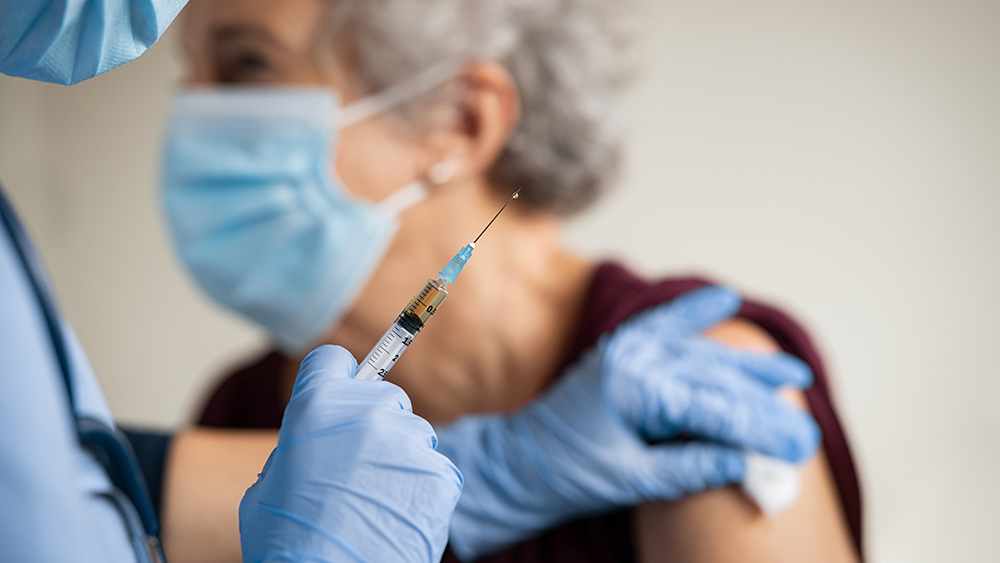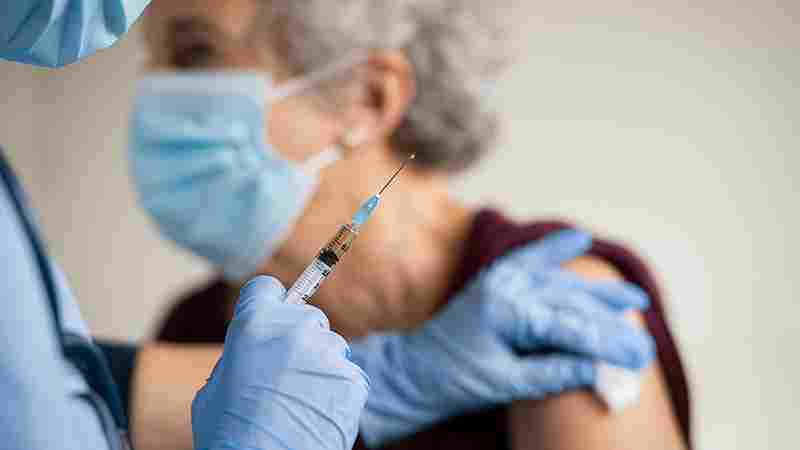
- 2021-03-27
- 0.0 Reitingas
- 1458 Peržiūrų
- Aptarti
(Paranormal) Health officials publicly criticized AstraZeneca following reports that the pharmaceutical company used outdated information to show how well its coronavirus (COVID-19) vaccine worked.
(Article by Nolan Barton republished from NaturalNews.com)
On Monday, March 22, AstraZeneca published reports stating that the vaccine it developed in partnership with Oxford University showed 79 percent efficacy in stopping symptomatic illness in trials conducted in the United States, Chile and Peru.
In addition, the company reported that the shot was 100 percent effective against severe or critical forms of the disease and posed no increased risk of blood clots. It also noted that for participants over the age of 65, vaccine efficacy was 80 percent.
But members of the Data Safety Monitoring Board (DSMB), an independent committee overseeing the trials, reportedly told federal officials that they had seen data that showed the vaccine might only be 69 to 74 percent effective and that they “strongly recommended” that this information be included in AstraZeneca’s public statement.
NIAID urges AstraZeneca to provide up-to-date efficacy data
The National Institute of Allergy and Infectious Diseases (NIAID) confirmed the reports. It stated that the monitoring panel has “expressed concern that AstraZeneca may have included outdated information from that trial, which may have provided an incomplete view of the efficacy data.”
In its statement, NIAID urged AstraZeneca “to work with the DSMB to review the efficacy data and ensure the most accurate, up-to-date efficacy data be made public as quickly as possible.”
NIAID Director Dr. Anthony Fauci called it an unfortunate unforced error.
“This kind of thing does … nothing but really cast some doubt about the vaccines and may contribute to the hesitancy,” he told ABC’s “Good Morning America.”
“The data really are quite good but when they put it into the press release it wasn’t completely accurate.”
AstraZeneca said the latest published results were based on an interim analysis of data through Feb. 17, adding that it would “immediately engage” with the DSMB to share its full analysis.
Dr. Larry Corey, an internationally renowned expert in vaccine development, said the monitoring panel’s rebuke was something he had not seen before. He praised the panel for speaking up, saying it showed the system of checks and balances worked.
AstraZeneca’s COVID-19 shot has faced questions since late last year when the drugmaker published two different efficacy readings from an earlier trial as a result of a dosing error.
Earlier this month, more than a dozen countries from the European Union temporarily suspended giving out the shot after reports linked it to a rare blood clotting disorder.
Germany and France resumed inoculations after the E.U.’s drug regulator, European Medicines Agency (EMA), cleared the vaccine last week. However, an opinion poll on Monday showed Europeans remained skeptical about its safety.
The AstraZeneca vaccine has been granted conditional marketing or emergency use authorization in more than 70 countries.
General public not high on getting coronavirus shot
Even before controversies hounded AstraZeneca, the general public’s confidence in coronavirus vaccines was not high. Even frontline workers were not sold on it at the onset of inoculations.
Reports circulated that a large percentage of frontline workers in hospitals and nursing homes have refused to take the COVID-19 vaccine. There were reports that about 50 percent of frontline workers in California’s Riverside County have refused to take the vaccine and that an estimated 60 percent of Ohio nursing home employees have refused the vaccine.
A survey of 2,053 New York City firefighters also found that more than half said they would refuse the COVID-19 vaccine when it became available to them.
Vaccines didn’t really curb deaths related to infectious diseases in the past. This is according to Ivan Illich, a Roman Catholic priest, who mentioned this in his book “Medical Nemesis.”
“The combined death rate from scarlet fever, diphtheria, whooping cough and measles among children up to fifteen shows that nearly 90 percent of the total decline in mortality between 1860 and 1965 had occurred before the introduction of antibiotics and widespread immunization,” Illich wrote.
“In part, this recession may be attributed to improved housing and to a decrease in the virulence of micro-organisms, but by far the most important factor was a higher host-resistance due to better nutrition.”
The husband and wife team of John and Sonja McKinlay, epidemiologists at Boston University, supported Illich’s claims by pointing out in an article published in 1977 that 92.3 percent of the mortality rate decline in the 20th century happened between 1900 and 1950 – before most vaccines existed.
The couple also noted that all medical measures, including antibiotics and surgeries, “appear to have contributed little to the overall decline in mortality in the United States since 1900 – having in many instances been introduced several decades after a marked decline had already set in and having no detectable influence in most instances.”
Follow Immunization.news for more news and information related to the coronavirus vaccines.
Sources include:
Pasaulio naujienas kitaip... skaitykite Paranormal Telegram, FB ir X(twitter) kanale...kadangi jau perskaitėte šį straipsnį iki pabaigos, prašome Jus prisidėti prie šio darbo. Skaitykite „Paranormal.lt“ ir toliau, skirdami kad ir nedidelę paramos sumą. Paremti galite Paypal arba SMS. Kaip tai padaryti? Iš anksto dėkojame už paramą! Nepamirškite pasidalinti patikusiais tekstais su savo draugais ir pažįstamais.
Turite savo nuomone, tapk autoriumi, prisijunk ir rašykite bloge. Dalinkitės receptais, sveikatos patarimais, nutikimais, susidūrėte su nekasdieniškais reiškiniais. Galite išversti iš užsienio kalbos, talpinkite su nuoroda. Laukiame Jūsų straipsnių, naujienų, apžvalgų ar istorijų!
Susijusios naujienos
Būkite pirmi, kurie pasidalins savo nuomonėmis su kitais.
Skaityti daugiau
Skaityti daugiau
Skaityti daugiau
Skaityti daugiau
Skaityti daugiau
Skaityti daugiau
Skaityti daugiau
Skaityti daugiau

